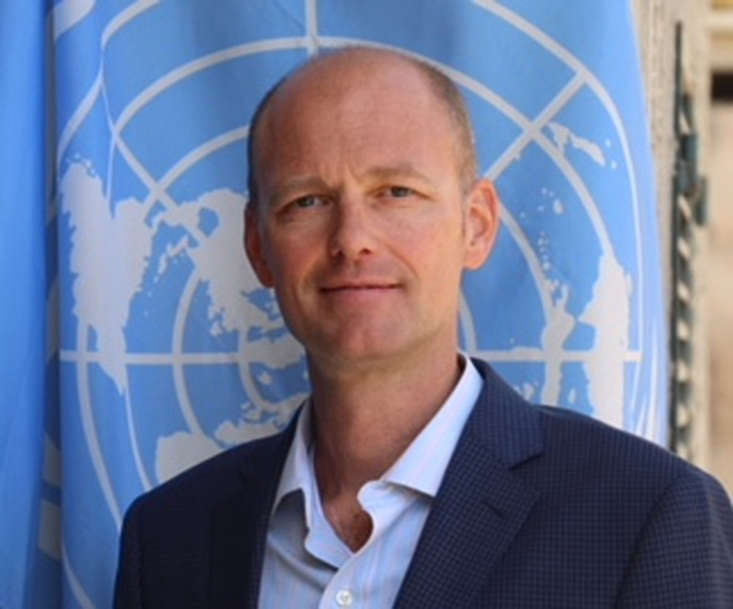Many pundits who study the evolving situation of Palestine ask themselves whether sustainable development is reasonable to expect as Palestine continues to be occupied and Gaza is kept under blockade. Rightfully, any discussion of development in Palestine must start with the fact that the largest and most visible constraint on Palestinian development is the ongoing occupation. After nearly 50 years, every Palestinian is vulnerable to some degree. Even though the occupation affects different groups of Palestinians in different ways, for most Palestinians there is scarcely any sphere of life that the occupation does not touch.
Despite these realities, the State of Palestine has been near the top of the Arab world in terms of several important social indicators, including literacy, vaccination rates, and maternal mortality. These accomplishments speak volumes of the efforts and sumud (steadfastness) of Palestine’s government, society, and families.
Earlier this year when UNFPA in cooperation with the Prime Minister’s Office launched the study titled Palestine 2030 – Demographic Change: Opportunities for Development, based on Palestinian Central Bureau of Statistics (PCBS) census data, we asked ourselves important questions regarding how many Palestinians there would be in 2030, what the composition of the population would be, and how that would affect Palestine’s ability to achieve the Sustainable Development Goals (SDGs). Looking at future population scenarios and dynamics provides a good guidepost of the action we need to take today in order to make it possible to achieve the SDGs by 2030: Action to ensure sustainable economic development, full employment, and social protection for all Palestinians. The title Demographic Change: Opportunities for Development signals that a growing population with a growing work force of young, vibrant, empowered, and productive citizens can provide a much-needed boost to the development of a nation, a country, or a community.
Development actors must be conscious of the limits of Palestine’s development prospects and the limited impact of donors’ investments. Nevertheless, Palestine’s loyal donors and the Palestinian Authority do have the opportunity to direct investments toward population groups where they can make a big difference: The vibrant youth! Youth must be empowered to realize their future potential. We should not risk that Palestine’s youth bulge be assessed retrospectively as a “missed opportunity.” This begs the question: Are we ready to invest directly and more heavily in youth to harness the opportunity? And how will this impact our strategies to achieve the SDGs by 2030?
The report Palestine 2030 points out the following challenges.
1. By 2030, the population will have reached 6.9 million, compared to 4.7 million in 2015, an increase of more than 2 million people. In other words: one “additional Gaza” in only 14 years. Are we ready for that?
2. By 2030, the number of young people will have increased, and the labor force will have grown from 1.3 million to 2.3 million. Can we create 1 million new jobs in 14 years?
3. By 2030, the school-age population (from primary to tertiary levels) will have increased by 48 percent, which will require an additional 1,650 new schools and 32,000 teachers.
4. By 2030, it is estimated that Palestine will require an additional 36 hospitals and almost 350 primary health centers.
5. By 2030, the number of registered refugees will have increased by 1 million, from 2 to 3 million. Most of them youth. What does this mean for the future of the refugees and their needs?
We know the problems that exacerbate the finding and implementation of solutions for these challenges! There are four main areas that can be summarized as follows. First, the Palestinian economy remains highly dependent on its public sector, which in turn is highly dependent on external budgetary support. The average Palestinian lives a precarious existence that depends on government or donor support. Second, Palestine’s control over its development prospects remains highly circumscribed. A government that does not control its borders, revenue, or monetary policy, and cannot access much of its natural resources is embarking on the 2030 Agenda with an overwhelming structural disadvantage. Third, unemployment is a major driver of vulnerability for youth. Unequal access to decent work is often associated with unequal access to the right networks and/or affiliation with political parties. Young women are more affected by this than young men. And finally, occupation policies on access, restrictions, building permits, and house demolitions, as well as successive rounds of conflict have taken their toll on the economy of Palestine, depressed the investment climate, and made it difficult if not impossible for the private sector to thrive.
Ending the occupation is, therefore, the highest development priority. However, as we work toward the ultimate goal of ending the occupation, investments in youth to harness their vibrancy, ideas, and positive energy must begin to happen as a matter of urgency. Without our youth, the chance of achieving the SDGs by 2030 will be significantly less!
To access “Palestine 2030,” please visit palestine.unfpa.org.



